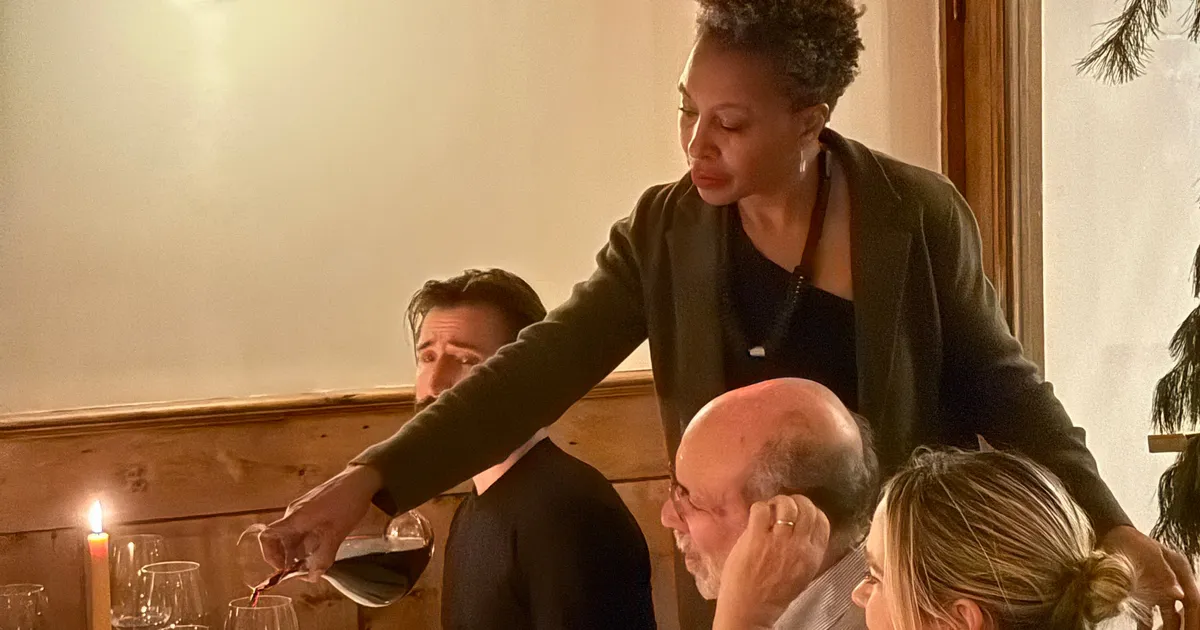For wine lovers, becoming a sommelier isn’t just a job—it’s a passion-fueled career path that blends deep knowledge, refined tasting skills, and the art of hospitality.
Whether you’re a server hoping to elevate your wine service or an enthusiast dreaming of turning your hobby into a profession, sommelier certification can open doors in restaurants, wineries, retail, and beyond.
But what does it actually take to become a certified sommelier? It’s more than memorizing grape names or swirling glasses with flair. It involves structured education, rigorous exams, and hands-on experience in the wine world. This article walks you through the key steps, levels of certification, and what you can expect on your journey toward earning that respected title.
What Is a Sommelier?
A sommelier is a wine professional trained in all aspects of wine service and selection, often working in restaurants or hospitality settings. Sommeliers not only curate wine lists and pairings but also educate staff, manage inventory, and enhance the guest experience.
There are various levels of wine expertise, but a “certified sommelier” usually refers to someone who has passed a formal examination through an established body, such as:
-
Court of Master Sommeliers (CMS)
-
Wine & Spirit Education Trust (WSET)
-
Society of Wine Educators (SWE)
-
International Sommelier Guild (ISG)
-
National Wine School (U.S.-based)
Each organization has different structures and focuses, but all provide recognized paths toward becoming a wine expert.
Step 1: Get Familiar with Wine Basics
Before pursuing formal certification, build a solid foundation in wine. This includes:
-
Understanding grape varieties (e.g., Cabernet Sauvignon, Riesling, Pinot Noir)
-
Learning wine-producing regions and styles (Old World vs. New World)
-
Developing basic tasting skills (appearance, aroma, palate, finish)
-
Pairing wine with food
-
Learning how to properly open, decant, and serve wine
You can start informally through books, tastings, online videos, and visiting wineries. Recommended reading includes Wine Folly, The Wine Bible by Karen MacNeil, or Windows on the World Complete Wine Course.
Step 2: Choose a Certification Path
There are several paths to becoming a certified sommelier. The two most recognized are:
1. Court of Master Sommeliers (CMS) – Service-Oriented
-
Designed for hospitality professionals.
-
Focuses on wine knowledge, blind tasting, and restaurant service.
-
Levels:
-
Introductory Sommelier
-
Certified Sommelier
-
Advanced Sommelier
-
Master Sommelier (MS)
-
The CMS is well-suited for those planning to work in fine dining or wine service roles.
2. Wine & Spirit Education Trust (WSET) – Academic Approach
-
Emphasizes theory, regions, and tasting.
-
Suitable for a broader range of careers: retail, education, import/export.
-
Levels:
-
Level 1 (Introductory)
-
Level 2 (Intermediate)
-
Level 3 (Advanced)
-
Level 4 (Diploma)
-
WSET doesn’t use the title “sommelier” but is globally respected and recognized by employers across the industry.
Other options include:
-
Society of Wine Educators (SWE) – Offers the Certified Specialist of Wine (CSW)
-
International Sommelier Guild (ISG) – Offers globally focused programs
-
National Wine School (U.S.) – Offers progressive levels and flexible online learning
Step 3: Enroll in a Course or Training Program
Once you choose a certification body, the next step is formal education. Most organizations offer in-person classes, online options, or hybrid formats. Training typically covers:

-
Major wine regions (France, Italy, Spain, California, etc.)
-
Viticulture and winemaking processes
-
Wine laws and labeling terms
-
Blind tasting techniques
-
Food and wine pairing principles
-
Wine service etiquette and presentation
Hands-on practice is essential. Attend guided tastings, take detailed notes, and work in settings where you can engage with wine daily, like restaurants or tasting rooms.
Step 4: Pass the Certification Exam
Each certifying body has different exam formats. Here’s what to expect from the most common sommelier certifications:
CMS Certified Sommelier Exam
-
Written theory test (multiple-choice and short answer)
-
Deductive blind tasting of two wines
-
Practical service exam (decanting, pairing recommendations, sparkling service)
You must demonstrate composure, confidence, and precision in a simulated restaurant setting. Many candidates work in hospitality before attempting this level.
WSET Level 2/3 Exams
-
Theory-based written exam (multiple choice or short essay)
-
Structured blind tasting (WSET Level 3 only)
-
No service component
WSET exams focus more on regional, grape, and winemaking knowledge. These are great options for people not planning to work directly in restaurants.
Step 5: Gain Experience in the Industry
While formal certification is valuable, nothing replaces real-world experience. Most certified sommeliers work in:
-
Fine dining restaurants
-
Wine bars
-
Hotels and resorts
-
Wineries and tasting rooms
-
Wine retail
-
Import and distribution
Entry-level roles like wine steward or server in a restaurant with a strong wine program provide excellent learning environments. You’ll gain confidence interacting with guests, building wine lists, and pairing wines with food in real-time.
Step 6: Continue Learning and Advancing
Once you’ve earned your certification, the journey isn’t over. Great sommeliers continue to taste, study, and evolve. Consider:
-
Traveling to wine regions
-
Joining local tasting groups
-
Attending trade tastings and masterclasses
-
Preparing for advanced levels of certification
-
Exploring related certifications in spirits, beer, or sake
You may also choose to specialize in areas like Italian wine, natural wine, or rare vintage service.
For those truly dedicated, the Master Sommelier (MS) title is the pinnacle—though only a tiny percentage of candidates ever pass this famously difficult exam.
How Long Does It Take?
The timeline varies based on your commitment, prior knowledge, and certification level:
-
Introductory Courses (CMS or WSET Level 1): A few days to a few weeks
-
Intermediate Certifications (CMS Certified or WSET Level 2/3): 3–6 months
-
Advanced and Master Levels: Often require years of study and industry experience
Most working sommeliers reach Certified level within a year if they are actively studying and working in the industry.
How Much Does It Cost?
Costs also vary depending on program, location, and level:
-
Introductory Courses: $300–$700
-
Certified Sommelier Exam (CMS): ~$600
-
WSET Level 2/3 Courses: $800–$1,500
-
Advanced or Diploma Levels: $2,000 and up
You’ll also spend money on tasting wines, travel, and books. Some employers may cover or reimburse part of the costs.
Is Becoming a Sommelier Worth It?
If you’re passionate about wine and love sharing that knowledge with others, becoming a certified sommelier can be an incredibly fulfilling career. It’s intellectually stimulating, socially engaging, and allows you to build expertise in a global, ever-changing industry.
While not always the highest-paying profession, it can lead to lucrative roles in beverage direction, wine buying, education, or even launching your own business. For many, it’s about passion first—profit follows with dedication.
Final Thoughts
Becoming a certified sommelier is a rewarding pursuit that combines study, tasting, and service excellence. It demands discipline and humility, but it opens up exciting possibilities for those who embrace the journey.
Whether you dream of managing a wine cellar at a Michelin-starred restaurant or simply want to deepen your appreciation for the grape, the sommelier path offers challenge, growth, and a vibrant community of fellow wine lovers.
Ready to raise your glass to a new career? Your journey starts with that first sip and a curious mind.


